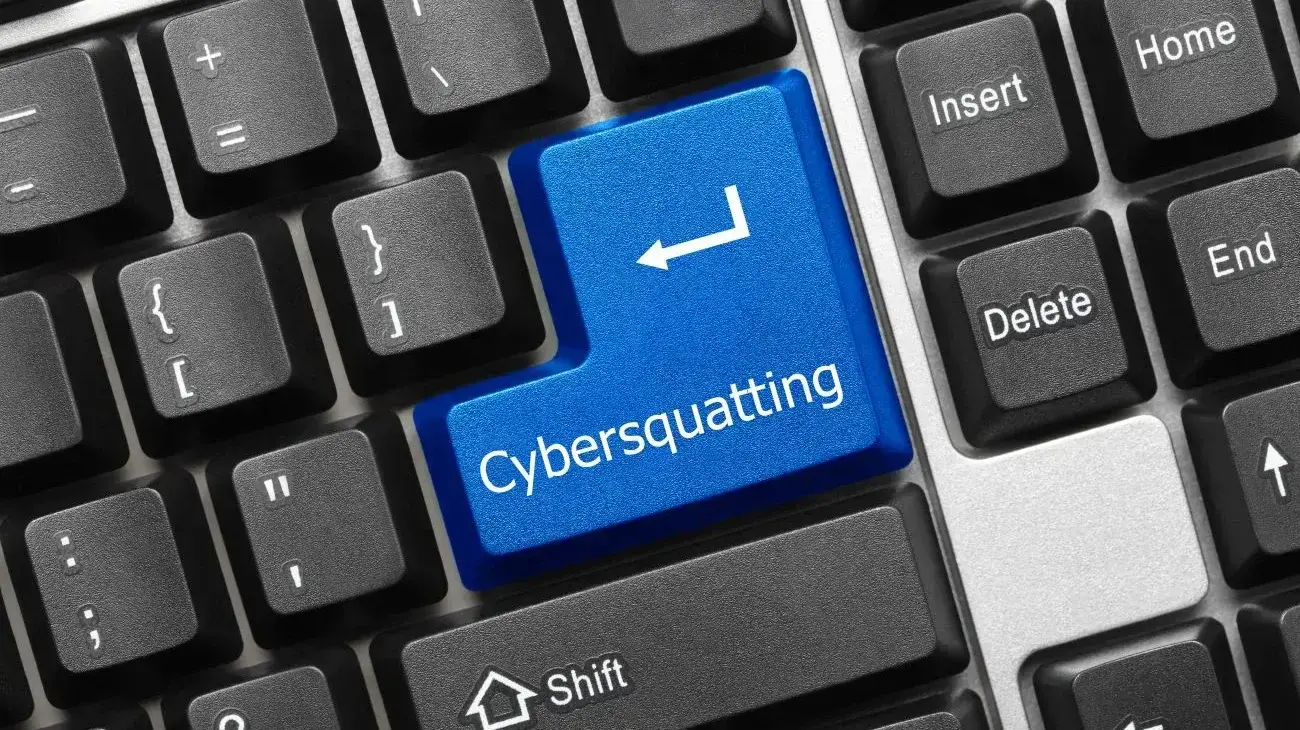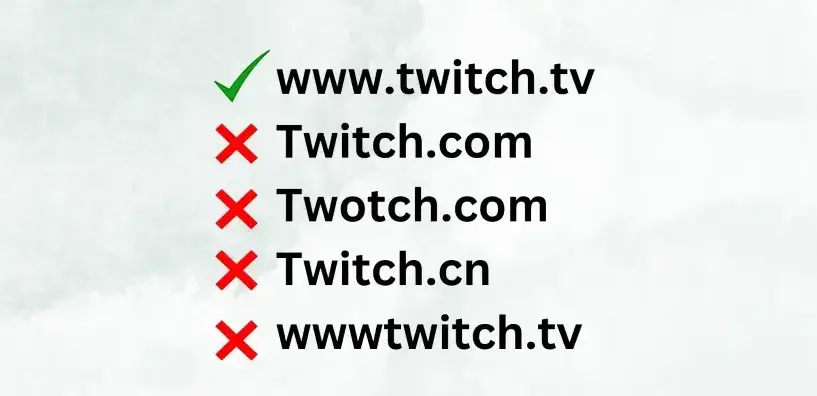To establish an online presence, your domain name is crucial; it's essentially your website's identity and address. With the number of websites exceeding 1.1 billion in 2024, domain squatting has become a major threat.
Domain squatting, or cybersquatting, involves registering a domain name to profit from someone else’s trademark. This practice not only affects brand owners but also resellers and the entire hosting industry.
This article explains what domain squatting is, how to prevent it, and how to recover a domain if it is taken from you.
What Is Domain Squatting?
Domain squatting is the practice of registering a domain name with the intention of selling it at a profit to someone who needs the name for their website, often because it matches their brand or trademark.
The difference between domain squatting and flipping is that domain flippers buy non-trademarked domains cheaply and sell them later at a higher price without using them.
In contrast, domain squatters usually attempt to sell the domain names back to the trademark owners at inflated prices or use the domains to host ads and generate revenue.
According to Palo Alto Networks, over 13,000 squatting domains were registered in 2019, with over 18% of them being malicious.
Is Domain Squatting Illegal?
Domain squatting is considered illegal because it blocks the rightful owner of a trademark or brand from buying the appropriate domain name.
In the face of the law, domain squatting is equivalent to holding a property (the domain name) for ransom, and it is deemed a trademark infringement.
If squatters can't prove a legal right to a domain, it's considered bad faith and they can be charged.
The US has the Anticybersquatting Consumer Protection Act to combat this, while in the UK, actions against squatters can be taken under the Trade Mark Act of 1994 for trademark infringement.
How to Prevent Cybersquatting?

1. Check with the domain owner
Sometimes, a domain matching your brand may be owned by someone who didn’t intend cybersquatting, and they might agree to sell it to you at a low cost. It's worth discussing a possible agreement with them before exploring other actions.
2. Preemptive domain registration
Try to register the domain name you want before you start using it. It is best if you really buy the domain name because only adding it to your cart does not stop someone else from doing the same.
3. Register similar domain names
Consider purchasing your domain name with various extensions (e.g., .com, .co, .biz) and common misspellings to prevent others from registering them. Research typical misspellings customers make when looking for your site to guide your choices.
4. Purchase domain ownership protection
Some providers offer protected registration. Getting this package ensures you keep your domain even if it expires or you wish to transfer it to another provider.
5. Register a trademark
You can secure your domain legally by trademarking it with the relevant authority. This varies depending on the country your domain is registered. In the US, this is done through the United States Patent and Trademark Office.
6. Be the rightful domain owner
Ensure your domain is not controlled by others by having it registered in your name, even if a third party or employee handles the registration for you.
How to Reclaim a Squatted Domain Name
Reclaiming a squatted domain name involves several steps:
1. Check the Domain's Status: Determine if the domain is truly squatted by checking if it's being used legitimately or just held for resale.
2. Contact the Owner: Try to contact the current owner directly, often through the contact information available in the domain's WHOIS record, to negotiate a purchase or discuss the domain's status.
3. Trademark Claim: If you have a trademark on the name, you may have legal grounds to claim the domain. Consult with a legal professional to explore this option.
4. Dispute Resolution: Use ICANN's Uniform Domain-Name Dispute-Resolution Policy (UDRP) or the Uniform Rapid Suspension System (URS) if you believe your trademark has been infringed. With evidence of trademark and bad faith on the domain squatter's part, chances are, this process will resolve the dispute without going to court.
5. Legal Action: As a last resort, consider taking legal action against the squatter. This step should be taken after consulting with legal professionals and considering the costs and benefits.
6. Prepare to Negotiate: Be ready to negotiate either the purchase price or the terms of the domain's transfer. Having a clear understanding of your budget and limits is important.
7. Monitor Domain Availability: If direct contact or legal action isn't viable, monitor the domain's registration status. It may become available if the squatter doesn't renew it.
Suppose your dispute is international, then you should go through WIPO. WIPO provides arbitration and mediation services, in which a panel of experts evaluates the case and resolves the dispute. WIPO also considers the UDRP in its proceedings.
Examples of Domain Squatting
Many of the biggest companies have been subject to domain squatting. Here are two examples:
1. TikTok
Before the massive popularity of the app, two Australian friends anticipated it and bought tiktoks.com for $2000.
When they decided to reject the offer of $145000 that Tiktok's parent company made them, the company filed a cybersquatting case with WIPO that included four domains in total.
Outcome: the panel ordered the two friends to transfer all five domains to Bytedance, Tiktok's parent company.
2. Microsoft
The tech giant decided to sue a teenager named Mike Rowe because of his mikerowesoft.com domain.
Mike did not intend to cause trademark infringement. He wanted to have a cool-sounding name, a phonetic variation of Microsoft.
Due to the public being on Mike's side, the two parties settled the dispute outside of court. You can find more details here.
3. Amul
India's leading dairy brand, Amul, was victimized by cybersquatters who registered domains like Amuldistributor.com and Amulboard.com to run phishing scams from 2018 to 2020.
The scammers created fake bank accounts and websites, demanding payments for distributorships and franchise opportunities, as well as fees for job applications.
Amul issued public warnings and took legal steps to combat these fraudulent activities.
4. BMW in Vietnam
BMW faced cybersquatting with the domain name bmw.com.vn, among others.
The Vietnamese Ministry of Science and Technology ordered the cyber-squatter to return the domain, which was eventually deleted from the registry when compliance was refused.
BMW also took legal action against other similar domains, arguing that their use was in bad faith and infringed on the BMW trademark.
The court sided with BMW on most claims except for monetary damages due to a lack of evidence.
5. PETA
PETA, short for People for the Ethical Treatment of Animals, advocates for veganism and is a nonprofit, which explains its ".org" website.
However, Michael Doughney bought the domain peta.com and turned it into "People Eating Tasty Animals," linking to meat suppliers, opposing PETA's goals.
PETA sued him, won, and now owns peta.com, redirecting visitors to their main site, peta.org.
What Is Typosquatting?

Typosquatting is when a domain's original spelling is changed by adding or removing any numbers, letters, or periods.
A cybersquatter uses typosquatting to purchase misspelled domain names for well-known brands.
The purpose is to make a fake website that people will visit if they mistype a domain name (i.e., misspell it or press one or more wrong keys).
Example:
Original: www.twitch.tv
- Twitch.com
- Twotch.com
- Twitch.cn
- wwwtwitch.tv
A Typosquatter’s goal is to make money through ads on misspelled domains, not by reselling.
You can prevent it by purchasing similar domains to your original. Typosquatting has been illegal in the US since 1999, under the Anticybersquatting Consumer Protection Act.
Can You Purchase a Registered Domain Name Without Cybersquatting?
The easiest way is to find another suitable domain. However, seeing as this is not always the best option, these are the steps you can take to achieve this goal:
Check for the activity of the website
See if the domain is a trademark
Learn who owns the domain
Determine how much you would pay
Contact whoever owns the domain
A more detailed explanation of this process can be found here.
The Role of AI in Predicting and Preventing Domain Squatting
Artificial Intelligence (AI) is transforming the battle against domain squatting by providing advanced tools for prediction and prevention.
Here's how AI is making a difference:
- AI predicts squatting by analyzing domain registration patterns and trending topics.
- Real-time monitoring alerts companies to the potential squatting of their trademarks.
- AI automates dispute filings, easing the trademark protection process.
- AI suggests domains to register for closing trademark protection gaps.
- Behavioral analysis of squatters helps prevent legal issues by identifying risky registrations early.
- AI scores domains on squatting risk, prioritizing protection for high-risk names.
Conclusion
Domain squatting is becoming a significant problem for both website owners and online brands, as well as resellers in the hosting industry. It poses risks to any business trying to establish or expand its online presence.
Although it can seem unavoidable, there are proactive steps you can take to mitigate or even prevent it. Since having a domain name is essential for an online presence, it is crucial to tackle this challenge directly if it arises.
Frequently Asked Questions
What is a domain name?
A domain name is the name of your website. A domain name is a word or a phrase that people enter in their browsers in order to be taken to a certain website on the Internet.
What makes a certain domain valuable?
Valuable domains are usually memorable, easy to spell, pronounce, and short.
Is selling domain names for profit legal?
Yes, selling domain names for profit is perfectly legal. What’s not legal is purchasing a domain name that incorporates a trademarked name with the intention of getting profit from the reputation of the trademarked entity.
What are some popular domain marketplaces?
Popular domain marketplaces include BrandBucket, Efty, Namecheap, Sed, and Flippa.
How long does it take to verify a domain?
Once you've added the verification record to your DNS settings, use the verification tool to check for it. Depending on the method and provider used, it can take a few minutes to an hour to confirm your domain is verified.

I've been navigating the web hosting waters for years now. As the Chief Editor at Verpex, I team up with some awesome writers to dish out the good stuff on hosting. Got a Master's in Journalism, so I always have an eye out for quality. Whether you're just dipping your toes or you're a seasoned surfer, I'm here to make everything web hosting feel like a breeze
View all posts by Julia Lozanov




















